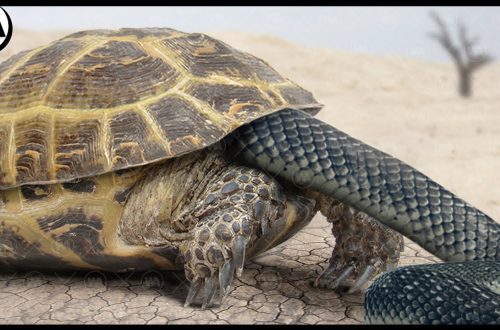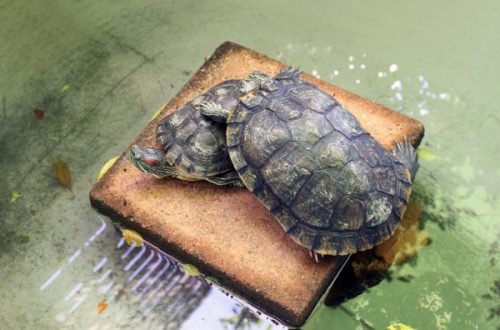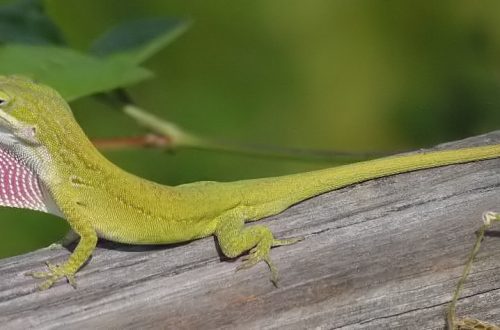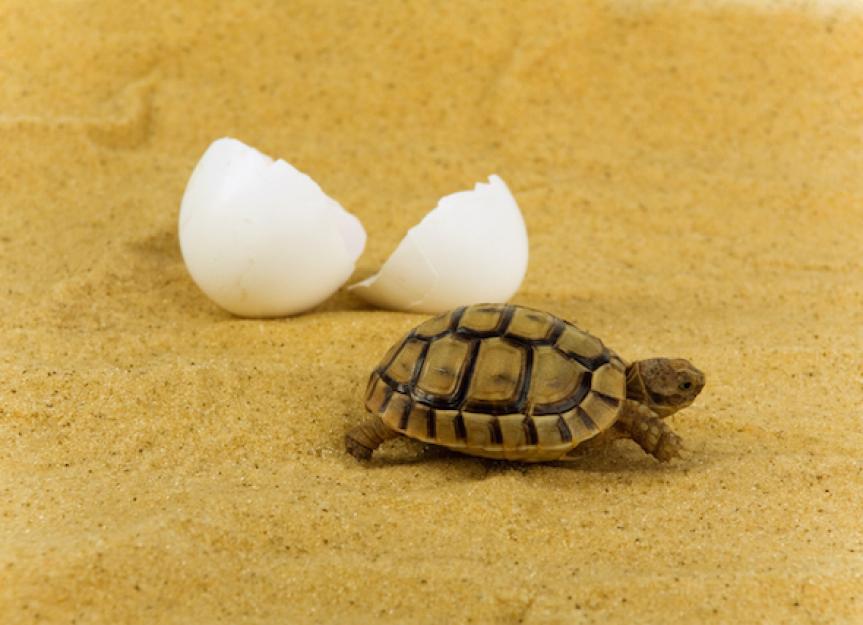
How turtles are born: hatching from eggs of newborn baby red-eared and terrestrial tortoises in the wild and at home
Newborn turtles are very tiny copies of adult reptiles. Most often, the owners acquire already grown pets. True turtle lovers breed unusual animals on their own, observing the birth of a land or freshwater turtle at home. To successfully obtain turtle offspring, it is necessary to create optimal conditions for future babies even at the stage of eggs. The hatching of turtles from eggs is a very exciting and exciting spectacle that allows you to briefly touch the secrets of nature.
Contents
How turtles are born
The birth of turtles in nature takes place in warm sand, where the reptile mother carefully laid her fertilized eggs. Depending on the type of animal, season and environmental conditions, newborn turtles hatch from eggs in 1-3 months. At home, reptile lovers place fertilized turtle eggs in an incubator, and after 100-103 days, while maintaining a temperature of 28-30C, one can observe the birth of red-eared or Central Asian turtles.
The birth of baby turtles of different species occurs in several stages:
- shell piercing. At the time of birth, a baby turtle has a special egg tooth, with the help of which a small reptile actively cuts the strong egg shell from the inside. The egg tooth in babies is located outside the upper jaw, it spontaneously falls out in the first days of a newborn pet’s life.
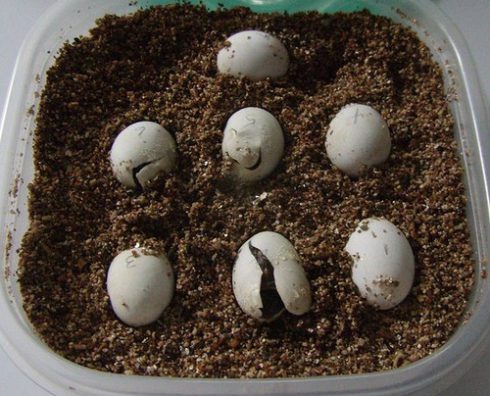
- ripening in the egg. Within 1-3 days after the shell integrity is broken, the red-eared and Central Asian newborn turtles continue to hide in broken eggs, gaining vitality. If within 3 days after cracking the shell, the turtle could not get out of the egg on its own, it is necessary to help it. But most often, weakened individuals that are doomed to death cannot cope with hatching on their own.
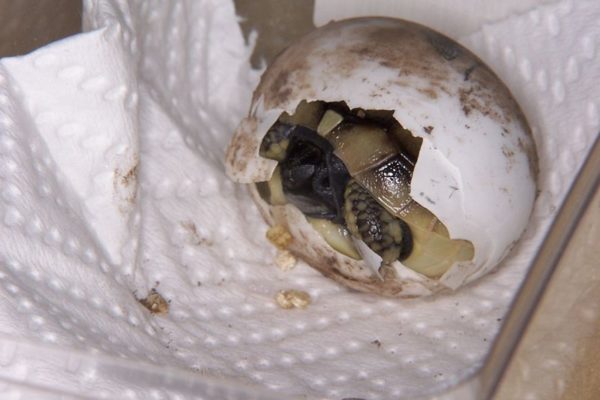
- Hatching. Finally, the little turtles finally hatch, they continue to sit for several hours in the depressions that were formed in the sand from the movement during the release of the babies from the shell.
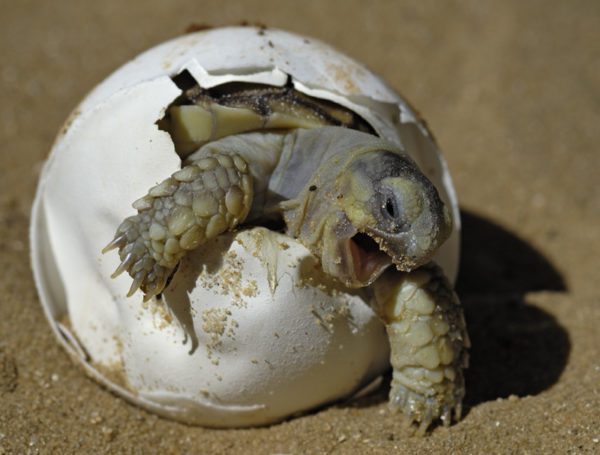
During the first five days, it is recommended to keep babies in an incubator, although in the wild, newborn sea turtles run to the water within a few hours of birth. But it is at the stage of an egg and a newborn animal that the largest percentage of small reptiles die in natural habitats, so at home you should not rush things and risk the lives of small pets.
Video: turtle birth
What do newborn turtles look like?
The baby of the red-eared turtle at birth has a body size of 2,5-3 cm, the baby of the Central Asian turtle is born about 3-3,5 cm in length. If there were 2 embryos in one egg, the size and weight of the twins will be several times smaller than that of their counterparts.
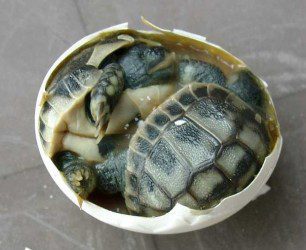
In turtles, small turtles hatch from eggs with a round body shape, resembling the silhouette of an egg. An adult turtle and its cubs differ from each other only in body size. Newborn babies immediately after birth are already fully prepared for independent existence and do not need maternal care.
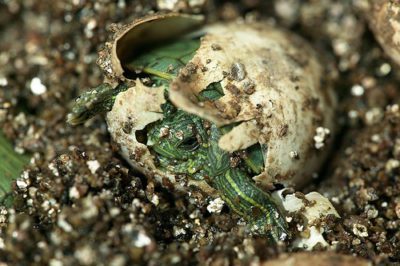
The birth of turtles is accompanied by a large loss of energy, and newborns will begin to feed in a few weeks or even months. The offspring of turtles are born with a yolk sac on their stomach, thanks to which babies can go without food for quite a long time. The cherry-sized yolk sac is yellow, and some baby red-eared turtles literally hug their bright bladder. Forcibly tearing or freeing a turtle from the yolk sac is prohibited; these manipulations can destroy a newborn reptile.
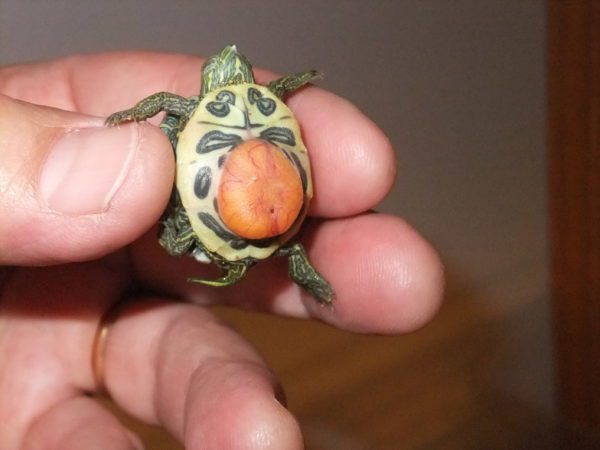
Within 2-5 days, the bubble will grow on its own. If turtles are born at home, to avoid damage to the yolk sac, you can tie it to the underside of the shell with gauze. After the bubble has resorbed, the gauze can be removed. Turtles are born with a transverse fold on the abdomen, which is associated with the position of the embryo in the egg. Within a few days of life, the groove successfully overgrows.
How turtles take care of their offspring
Caring for offspring is the lot of mammals that give birth to from 1 to 10-12 cubs unprepared for independent life and take care of them for several months, and sometimes the first years of life. In the wild, a reptile builds a nest, lays eggs in it, and safely forgets about its future brood. In one turtle clutch there are from 50 to 200 eggs, depending on the species, only 5-10 young individuals will survive from this amount.
Although there are pleasant exceptions. Female brown turtles guard the nest with future babies until they are born. Female Bahamian ornamented tortoises return to their clutches by the time the babies are born and dig through the sand, helping the babies to get out into the light.
Red-eared and Central Asian turtles, following the example of most of their relatives, do not care about their offspring at all. Reptiles have no maternal instinct at all. If babies are placed in the same terrarium or aquarium with their parents, adults can cause serious harm to health or kill their own cubs. Caring for newborn turtles born at home, from the first days of their unintelligent life, falls on the shoulders of their owners.
Baby care
Little turtles, despite their tiny size, are already quite mature and independent. Young reptiles will need their own space. After 5-7 days, land turtles are taken out of the incubator and moved to a small terrarium, at the bottom of which a special soil should be placed: sawdust, peat or gravel. The air temperature is maintained at 30-32C with a fluorescent lamp. A prerequisite is the installation of a source of ultraviolet radiation for reptiles with a power of 10% UVB and a special drinker.
Before transferring babies to their own home, they must be bathed in boiled water with a temperature of + 36C for 30-40 minutes. The volume of water should reach 2/3 of the body height of the turtles. Do not be afraid if the fools will put their heads under the water and blow bubbles, wild relatives behave in exactly the same way. Water procedures saturate the body of the cubs with the necessary moisture and stimulate the intestinal motility of newborn pets. Bathing babies at first is necessary 2-3 times a week.
Caring for newborn baby turtles of the red-eared turtle is necessary in compliance with the principles of keeping adults. Babies are not yet able to swim after birth, so the owners should observe the behavior of the cubs in the first hours of their life in the aquarium. For young freshwater turtle reptiles, it is also necessary to equip their own home. For 10-20 turtles, one aquarium with a capacity of 100 liters is enough, the volume of water must be increased gradually as the kids get used to living in the aquatic environment.
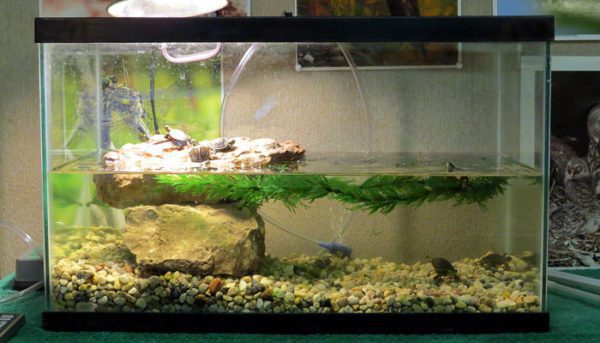
Water temperature for young freshwater reptiles should be at least 28-30C. The aquarium must be equipped with shores and islands so that the kids always have the opportunity to relax and warm up. A prerequisite for the correct development of the pups is the installation of a daylight and ultraviolet lamp for reptiles with a power of 5% UVB.
The body of newborn turtles is very sensitive to infectious microflora that breeds in warm water. An aquarium for red-eared turtles from the first days of life should be equipped with a filtration system. If it is not possible to install a filter, it is recommended to completely change the water for babies in 1,5-2 days. Settled fresh water should be poured into the aquarium at exactly the same temperature in which newborn red-eared turtles usually live.
feeding turtles
Under natural habitat conditions, turtles do not feed their young with milk, babies do not know their mothers and get their own food. Due to the presence of the yolk sac, both land and aquatic reptile species can at first safely do without food. In the wild, a spare yolk allows baby turtles to go without food for up to 9 months!
Feeding a baby red-eared turtle at home begins by the end of the first week of the life of an exotic pet, when the newborn turtle is fully accustomed to the new home and accustomed to the aquatic habitat. By nature, freshwater reptiles are predators, although most often red-eared turtles are omnivores. Growing babies are first offered animal food: daphnia, gammarus, bloodworm, coretra. As they grow older, fresh herbs, pieces of sea fish, and shrimp are added to the diet.
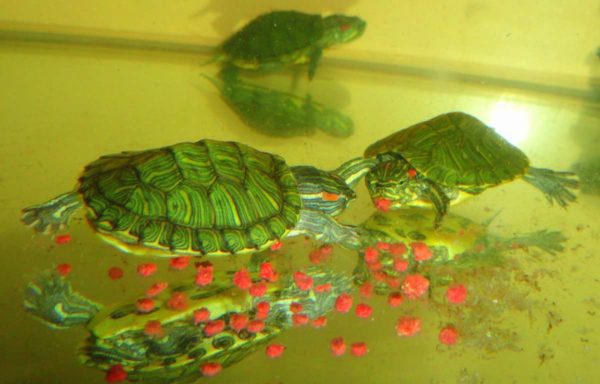
Experts recommend giving young animals special vitamin supplements for reptiles, which ensure the proper development and growth of small reptiles. Babies need to be fed more often than adults; daily feeding is used in the first weeks of life. After 2 months, babies are transferred to food every other day, by six months, animals should eat no more than 1 time in 3 days. You can not overfeed the cubs in order to avoid the development of metabolic disorders.
Video: care and feeding for newborn red-eared turtles
At the end of the first week of life, babies of land turtles are offered lettuce, parsley, and dandelion leaves. Grown pets can be given an apple and carrots. A prerequisite for the proper formation of the skeleton and shell is the presence of sources of calcium in the diet of babies. You can add crushed egg shells, reptile chalk, put a cuttlefish bone in the terrarium.
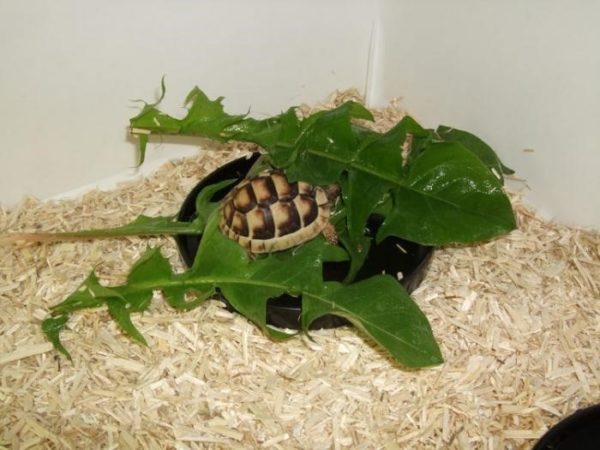
Newborn babies, which are toy-sized, are already carefully exploring the world with their tiny beady eyes and actively working their limbs, trying to master new territory.
Tiny bright green red-eared turtles swimming amusingly in the aquarium invariably delight all family members.
The birth of a turtle: how cubs are born, what you need to know about newborn turtles
3.2 (64%) 10 votes



